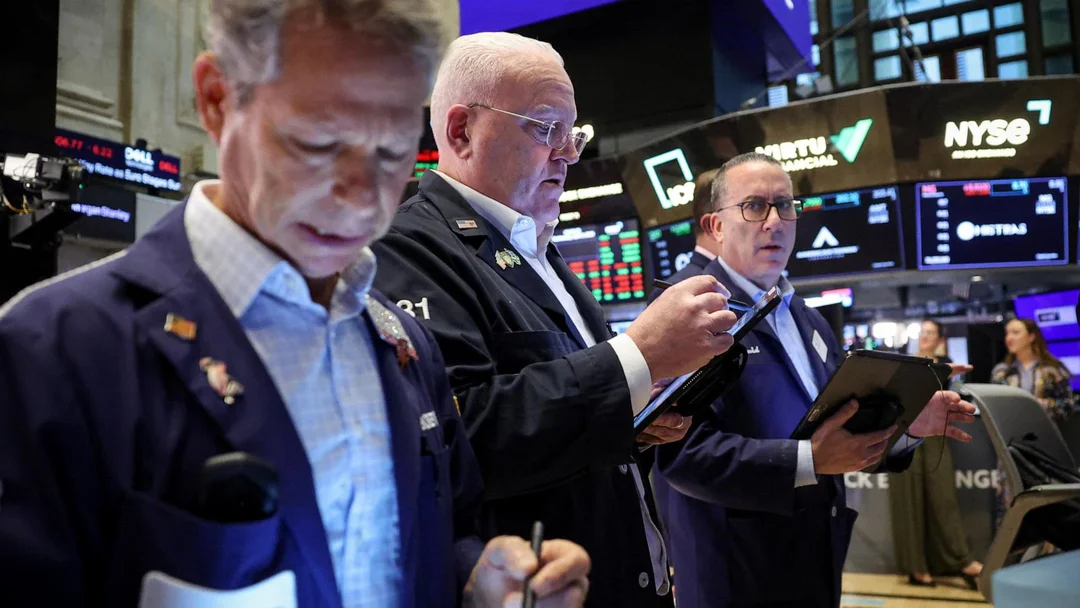
Trump’s Tariff Pause Fails To Calm Markets As Treasury Bond Turmoil Raises Economic Fears
In a dramatic turn for global markets, President Donald Trump’s recent decision to pause aggressive tariffs for 90 days has done little to soothe anxiety across financial landscapes. Instead, experts warn, the economic damage from weeks of escalating trade tensions—and the shockwaves in the U.S. Treasury bond market—may be lasting, impacting everything from consumer loans to the stability of the global economy.
The importance of these developments cannot be overstated. As the world’s largest government bond market, U.S. Treasuries anchor borrowing costs for households, companies, and even foreign governments. When turmoil hits here, its effects ripple across continents, influencing mortgage rates, credit card interest, and investor confidence worldwide.

According to economist Rebecca Patterson, the past weeks have felt like living through an economic hurricane. Shockingly broad tariffs fueled a rapid investor retreat – a sudden 'dash for cash' so intense that even safe havens such as Treasuries and gold were sold off. Although Trump’s tariff pause brought hope of weathering the storm’s worst, it also exposed fundamental shifts in the financial landscape, hinting at long-term consequences rather than a swift recovery.
Before the pause, yields on 30-year Treasuries spiked to above 5%, their sharpest jump since 2020, setting off global ripples. Britain’s 30-year bond yields soared to heights unseen since 1998, illustrating how a selloff in U.S. government debt quickly morphs into a worldwide concern. Such spikes not only trigger volatility but also threaten to increase borrowing costs across the board.
Experts speaking with ABC News emphasized direct consumer impacts. The yield on the 10-year Treasury remains roughly half a percentage point higher than just five days before, which pressures mortgage, credit card, and car loan rates upward. "For everyday people, it’s a concern for their own borrowing costs," noted finance professor Anastassia Fedyk from UC Berkeley. While higher yields mean better returns for those invested in fixed-income products, most consumers face tighter budgets as interest rates rise.
Part of the recent bond turmoil stems from fear that tariffs will trigger inflation: if prices rise sharply, fixed payouts from Treasuries lose value, making bonds less attractive and prompting further selloffs. Dominic Pappalardo, a strategist at Morningstar Wealth, explained, "The longer you have to wait to receive your bond payment, the more inflation will devalue that payment."

Moreover, surges in yields impact the financial system’s health. Many banks rely on Treasuries as core safe assets; falling bond prices erode their capital cushions. If this persists, it could tighten liquidity and threaten financial stability. "We’re far away from that," Pappalardo said, "but that’s the concern if we continue down this path."
While the tariff pause momentarily eased the chaos, experts caution it may be more akin to the eye of a hurricane—where apparent calm hides deeper, structural shifts that only reveal themselves once the storm fully passes. The question lingers whether U.S. economic growth can withstand these shocks or will face longer-term setbacks in borrowing, investment, and consumer sentiment.
As policymakers and investors navigate this volatile period, the world watches closely. Have we merely survived the first gale of a prolonged financial tempest? Readers, what are your thoughts on the impact of tariffs and volatile bond markets on everyday life? Join the discussion below and share your perspective.
Related issues news
What is the American bond market?
The bond market (also debt market or credit market) is a financial market in which participants can issue new debt, known as the primary market, or buy and sell debt securities, known as the secondary market.
What are bond markets?
A place to buy & sell bonds But at a higher level, returns in the bond markets are much more related to interest rate changesu2014and perceptions about what will happen to interest rates in the future.
Who sells US bonds?
TreasuryDirect is the official United States government application in which you can buy and keep savings bonds. To buy a savings bond in TreasuryDirect: Go to your TreasuryDirect account. Choose BuyDirect.
What are 10 year treasury yields?
The 10-year Treasury yield is the interest rate on 10-year Treasury bonds, which is the interest rate the U.S. Treasury would have to pay to borrow for a 10-year period. The 10-year rate decreased over the past four decades. It was, for example, 15% in 1981, but averaged only 2% over the period from 2013-2022.